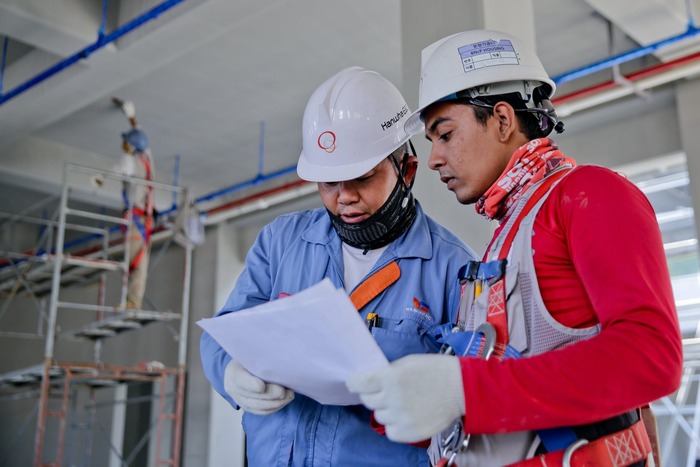In any organization, ensuring workplace safety is paramount to the well-being and productivity of its employees. Workplace safety tips are not just important for meeting legal requirements, but they also play a significant role in fostering a culture of awareness and responsibility among employees.
From understanding risks to knowing emergency procedures, implementing these safety tips for work can make a substantial difference in creating a safe working environment for everyone involved.
Importance of Workplace Safety
Workplace health and safety should be a top priority for every employer, irrespective of the size of the organization. Understanding the significance of workplace safety tips and implementing them diligently can protect employees from various hazards and contribute to a positive work environment. It is crucial for employees to be aware of the risks associated with their specific job roles and the steps they need to take to mitigate those risks.
Top 10 Workplace Safety Tips Every Employee Should Know
In order to promote a safe working environment, here are ten essential workplace safety tips that every employee should be familiar with:
- Understand Risks: Employees should have a clear understanding of the potential risks involved in their work environment. Whether it is operating machinery or working in a hazardous area, being aware of these risks is crucial for taking necessary precautions to prevent injuries.
- Be Aware of Your Surroundings: Constant vigilance is essential in any workplace setting. Employees should always stay alert and be mindful of their surroundings to identify and address any potential hazards promptly.
- Know the Location of First Aid Kits: In case of an emergency, quick access to first aid is vital. Employees should know the exact location of first aid kits and be aware of designated first aid officers who can provide assistance when needed.
- Take Regular Breaks: Preventing workplace injuries often involves managing fatigue and burnout. Encouraging employees to take regular breaks can help them stay fresh and focused, thereby reducing the risk of accidents.
- Use Equipment Properly: Proper handling of machinery and tools is essential for workplace safety. Employees should adhere to safety guidelines, avoid shortcuts, and use equipment only for its intended purposes.
- Pay Attention to Signage: Safety signage serves as a crucial visual cue in identifying potential hazards in the workplace. Employees should always adhere to the instructions provided on signs to maintain a safe working environment.
- Know Emergency Exit Routes: All employees must be familiar with the emergency exit routes in their workplace. Clear knowledge of evacuation procedures can save precious time in the event of a crisis.
- Keep Emergency Exits Accessible: Access to emergency exits should never be obstructed. It is imperative to ensure that these pathways are always clear and unobstructed for quick evacuation during emergencies.
- Report Unsafe Conditions: Encouraging open communication about safety concerns is vital. Employees should feel empowered to report any unsafe conditions or hazards to the management promptly.
- Wear Correct Safety Equipment: Personal protective equipment (PPE) plays a crucial role in safeguarding employees from potential workplace hazards. It is essential for every employee to wear the appropriate safety gear to ensure their well-being.
Implementing Workplace Safety Measures
Beyond these basic safety tips for work, there are several additional measures that organizations can adopt to enhance workplace safety:
- Equipment Inspection Protocols: Establishing regular inspection protocols for equipment helps ensure their proper functioning and reduces the risk of accidents.
- Chemical Handling and Storage: Providing training on safe chemical handling practices can minimize the risk of exposure to hazardous substances and promote overall safety.
- Workplace Ergonomics: Educating employees about ergonomic practices can prevent musculoskeletal issues and improve overall well-being in the workplace.
- Safe Lifting Techniques: Proper lifting techniques are essential for preventing back injuries and maintaining a safe work environment.
- Fall Prevention Measures: Implementing measures to prevent falls can significantly reduce the risk of injuries and create a safer workplace environment.
- Heat Stress Prevention: Educating employees on heat stress prevention measures is crucial for maintaining a safe and productive work environment during elevated temperatures.
- Vehicle Safety Protocols: Providing guidelines on vehicle safety practices helps mitigate the risk of accidents and ensures employee well-being on the road.
- Noise Control Measures: Implementing measures to reduce noise levels in the workplace protects employees’ hearing and minimizes the risk of hearing damage.
- Dangers of Distracted Work: Emphasizing the importance of focus and attentiveness at work reduces the likelihood of errors and enhances overall workplace safety.
- Work-Life Balance: Maintaining a healthy work-life balance is essential for preventing burnout and fostering a healthier work environment.
Importance of Safety Communication
Good communication is key to ensuring that employees are well-informed about the workplace safety tips they need to follow. Encouraging open dialogue and providing regular safety updates can help build a culture of safety awareness within the organization. However, in today’s digital age, cutting through the information clutter to reach employees can be challenging.
Utilizing DeskAlerts for Safety Communication
DeskAlerts offers a reliable solution for delivering important safety messages to employees in a timely and effective manner. By leveraging various communication channels such as pop-up notifications, screensavers, and desktop tickers, organizations can ensure that safety tips reach employees directly and are not overlooked.
This proactive approach can significantly contribute to maintaining a strong safety culture within the workplace.
In conclusion, prioritizing workplace safety is paramount for the well-being of employees and the overall success of an organization. By implementing and reinforcing safety tips for work on a regular basis, organizations can create a safer and more productive work environment where employees feel valued and protected.
Remember, safety is everyone’s responsibility, and by working together to uphold safety standards, we can build a workplace where every employee can thrive.


